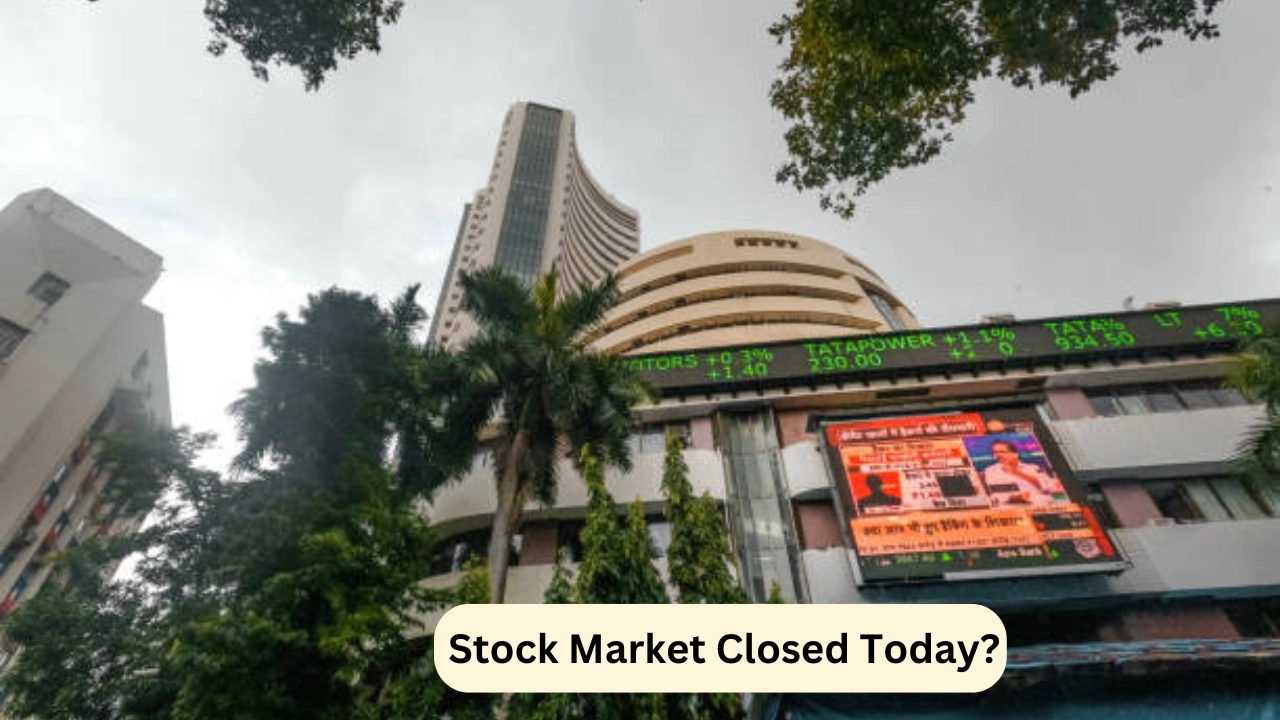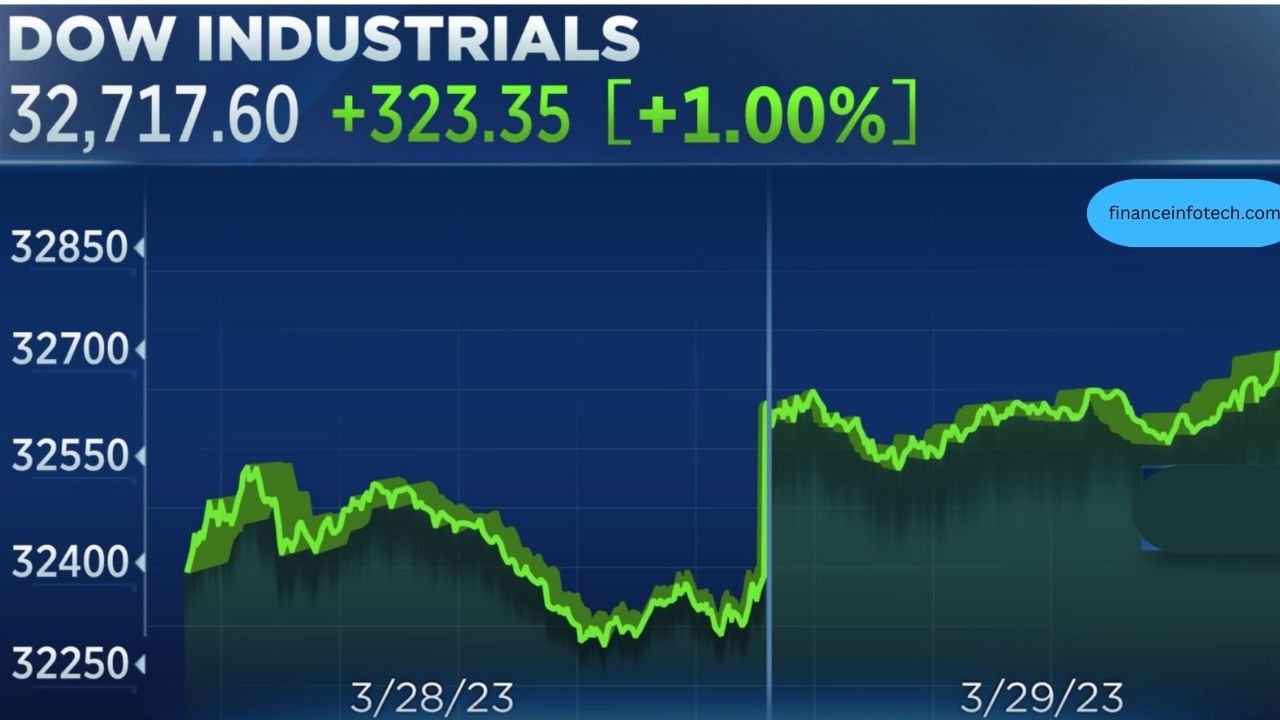Table of Contents
Stock Market Today – Navigating current trends and market movements
Stock market movements continue to influence investment strategies and economic forecasts around the world. When we look at the current market conditions, there are many factors driving investor sentiments and market movements. Anyone looking to make an informed investment decision in today’s financial landscape must understand these trends.

Major Indices Performance and Analysis
The Big Three: Dow Jones, S&P 500 and NASDAQ
The market’s activity today is mixed, reflecting the many factors that are at play in this current economic climate. The Dow Jones Industrial Average is resilient, thanks to strong performances from the traditional financial and industrial sectors. Investors are looking for stability and proven track record in established companies.
Investors are balancing growth prospects with economic uncertainty. The S&P 500 represents the broader market. Investors seeking defensive positions continue to favor value stocks, such as those in energy and utilities.
Small-Cap and mid-cap performance
Small-cap and midcap stocks tell their own stories. Russell 2000, the index that tracks small-cap firms, has displayed impressive resilience. These companies benefit from the domestic economy and are less vulnerable to international headwinds than larger multinational corporations.
Mid-cap stocks are represented by indices such as the S&P Mid Cap 400. They offer growth potential, while still maintaining greater stability than their smaller-cap counterparts. Investors have been attracted to this segment as they are looking for companies with the ability to grow their market share and maintain operational flexibility.
Sector Rotation and Industry trends
Technology Sector Dynamics
Artificial intelligence and cloud computing are leading the way in the technology sector. The technology sector is maturing, and investors are more selective in determining which tech stocks merit premium valuations.
Semiconductor firms are experiencing mixed fortunes. Some are seeing strong growth, while others are dealing with consumer electronics. This divergence in the tech sector shows the importance of focusing on specific company fundamentals, rather than relying on broad sector-based investments.
Financial Services Outlook
The current interest rate environment is a positive for financial stocks, especially banks. Banks become more profitable when rates increase. Investors are re-engaging with regional banks in particular as they can benefit from higher rates without being subject to the same regulatory pressures that larger institutions face.
The insurance companies also perform well as they can generate higher returns on their portfolios of investments due to the increased rates. This shift in the financial sector represents a move away from growth-oriented strategies to value-oriented ones.
Energy Sector Resilience
Energy sector is continuing to be strong, driven by geopolitical and global supply dynamics. Oil and gas companies have strong cash flow, which allows them to return capital to investors through dividends and stock buybacks.
The dynamics of renewable energy stocks have changed. While policy support provides long-term tailwinds, near-term challenges relating to supply chains and financing projects create volatility. Investors are taking a long-term approach, and focusing their attention on companies that have strong project pipelines as well as solid financing structures.

Healthcare and Consumer Staples
Investors seeking stability are attracted to defensive sectors such as healthcare and consumer staples. Healthcare companies with established medical devices or strong pharmaceutical pipelines offer both defensive and growth characteristics.
These companies benefit from their business models that are recession resistant. These companies offer essential products and services consumers require regardless of the economic climate, making them appealing during times of market uncertainty.
The key market drivers and economic factors
Interest Rate Environment
Federal Reserve monetary policy is still the primary factor driving market sentiment. Interest rates are impacting everything from stock prices to bond yields. Investors closely monitor economic data to get clues on future interest rate decisions. These policies directly affect borrowing costs, profits of corporations, and investment flows.
Rates that are higher generally benefit financial firms, while creating headwinds to high-growth stocks whose future earnings potential is dependent on them. This dynamic is leading to a fundamental change in the way investors value companies.
Inflation and consumer spending
Investors continue to be influenced by inflation trends, and they are analyzing each economic report looking for any signs of a change in price pressure. As households adjust to new price levels for various goods and services, consumer spending patterns change.
Companies that can pass on increased costs to their customers are more successful than those who cannot. It has also led to a greater focus on business models which can maintain margins even in inflationary environments.
Geopolitical Perspectives
Global markets are affected by international events and trade relations. Market volatility is influenced by supply chain disruptions, international conflicts, and trade policies.
Diversified global companies are better able to navigate these challenges, while those who have a concentrated geographic exposure may face more risks and opportunities based on their particular markets.

Important Stock Movements & Corporate News
Earnings Season Impact
Companies that beat expectations see significant price changes. Investors are looking at the quality of earnings and revenue growth trends. They also consider forward guidance.
Stocks of companies that demonstrate operational efficiency and good management are valued higher, while stocks of those who struggle with execution or face industry headwinds underperform.
Mergers and Acquisition Activity
M&A activity is robust. Private equity firms and strategic buyers continue to pursue attractive targets. This is especially true in sectors that are undergoing technological or consolidation transformation.
Financing and regulatory approvals are important factors in determining the value of transactions and their progress.
Investment Strategies for Current Market Situations
Diversification of Approaches
Diversification is still important in today’s market, but it requires careful implementation. Diversification may not be enough to protect against specific risks in a sector or take advantage of emerging opportunities.
Combining growth and value strategies can be beneficial for investors, as they balance high-potential assets with stable income-generating assets. This strategy helps to manage volatility and maintain upside potential.
Risk Management Techniques
In the current market climate, effective risk management is crucial. Position sizing, stopping-loss strategies and portfolio rebalancing are all part of maintaining desired risk levels.
Understanding correlation between different investments helps prevent over-concentration in similar risk factors. Investors pay more attention to the performance of their investments in different economic scenarios.

FAQs
1. What are the factors driving today’s volatility in the market?
The current market volatility is a result of multiple factors, including uncertainty about interest rates, inflation fears, and changing investor sentiments between growth and value investing. Short-term price changes are also influenced by economic data releases and earnings reports.
2. Is it a good time for investing in the stock markets?
A: It is very difficult to time the market. For most investors, it is best to keep a long-term outlook. The current market offers opportunities across a variety of sectors. However, it is important to invest based on your risk tolerance and investment horizon instead of trying to time the market.
3. Which sectors are performing the best in this environment?
A: Financial Services, Energy, and certain defensive industries like healthcare and consumer staples, are showing relative strength. Diversification is important because sector performance can quickly change based on changes in economic conditions or policy.
4. How does rising interest rate affect different types stocks?
Rising rates benefit financial companies by improving margins, but they can also pressure stocks with high growth potential because future earnings become less valuable. Dividend stocks could become less appealing compared to bonds. Companies with high debt levels may also face higher borrowing costs.
5. What should new investors concentrate on?
A: For new investors, it is important to prioritize the following: understanding fundamental analysis, maintaining diversity, and developing an investment strategy for long-term. Start with high-quality companies, avoid making emotional decisions, and slowly build your knowledge of different investment strategies.
6. How important is it to diversify internationally at the moment?
A: Diversification internationally is still a valuable tool for reducing risk in your portfolio and gaining access to growth opportunities on different markets. Investors should be mindful of geopolitical risks, currency fluctuations, and the economic conditions in different regions.
Conclusion
You need to stay on top of the changes in the market if you want to be successful. This means keeping up with trends, knowing what drives the economy and managing risk intelligently. Stay informed, make thoughtful and disciplined decisions, and spread your investments (so that you don’t put all your eggs into one basket) to achieve long-term financial success.














